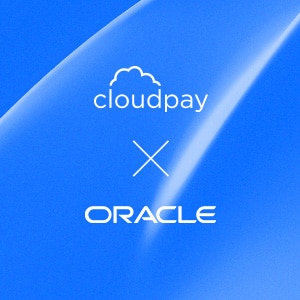Due to a wealth of well-documented benefits, switching to a unified, integrated global payroll platform is a highly compelling proposition for many international businesses. Choosing the right technology vendor or outsourcing provider for the job, however, can be challenging.
The main point to bear in mind before undertaking the vendor evaluation process is that not all global payroll solutions are created equal (or anywhere near equal, for that matter). To ensure you choose the right partner for your business, you will need to stress test each vendor’s claims as part of a comprehensive review of available solutions. As you begin to evaluate the market, you will find many points of difference in each provider’s global reach, delivery model, technology, service stack and more.
With so many variables across the vendor landscape, it can be difficult to know exactly what you should be looking for – and what you should avoid. In this post, we profile six essential criteria to evaluate when conducting your due diligence on global payroll.
1. Technology Platform
Developing a detailed understanding of each vendor’s technology capabilities is a critical element of the evaluation process. And while most global payroll providers claim to have a “unified” technology platform, you shouldn’t assume that means every global solutions merits an apples-to-apples comparison. The reality is very different.
Certain platforms still rely on an outdated ‘aggregator’ model for processing, whereby vendors link a variety of disparate local systems via a thin technology layer. Aggregator approaches are rarely as robust or integrated as advertised, and tend to very limited in essential areas such as global payroll reporting, analytics, and compliance (which are increasingly important to organizations with 200-10,000 employees).
Regardless of your organization’s size or scope of needs, the bare minimum to demand of a global payroll services provider’s technology solution is a payroll processing engine that can support global and localized data collection and analysis, provide check printing or ePayslip functions, deliver self-service tools to users, and offer extensive customer support, secure document management, compliance tracking, and reporting.
Yet there are fundamental differences in the overall ‘packages’ and technological offerings available – making it imperative for buyers to be as clear about their requirements as possible before evaluating possible solutions, and to recognize the difference between the global and global aggregator models: Historically, the question asked of global payroll managed services providers has been “How many payroll engines do you have?” Today, the more important question is “How much payroll processing will be handled by you (the vendor), and how much by the ‘partner network.’”
2. Reporting and Analytics
The ability to achieve greater visibility into payroll performance is one of the key benefits of implementing a unified global payroll solution. Armed with stronger intelligence on payroll, companies can simplify corporate oversight and invest in aligning payroll with larger business objectives in a more strategic and thoughtful manner.
As such, the reporting capabilities of different platforms should be a key factor in your business; vendor evaluation process. The ideal provider will be capable of maintaining a single database for all of your global payroll data – enabling the solution to automate much of the reporting process and deliver dashboard analytics allow managers to filter for more detailed information. An automated, unified global approach helps multinational companies eliminate the time they commonly waste on data mining multiple disparate systems for data and manually aggregating their reports.
It’s also extremely beneficial if a vendor can help you review data from your end-to-end payroll process more holistically – helping you identify ways to improve both the efficiency and effectiveness of your payroll operation. For instance, can the vendor enable you to create reports showing how long each step of the payroll process takes, or to identify bottlenecks? Can you see where issues are being raised, and by whom?
Consider, too, the way in which each platform presents your data. Visualization tools enable complex data to be conveyed in a simplified and engaging form, with iPad and tablet compatibility adding to an improved user experience – putting key insights at your fingertips.
Though reporting capabilities are often lumped into a payroll vendor’s technology features, analytics are about far more than functionality – they represent the ability for your organization to better utilize global payroll data for business decision-making. With the right tools, you can surface valuable insights that can provide more valuable, actionable information to the C-suite.
3. Integration with other HCM & Finance Systems
Maximizing your investment in global payroll requires choosing a provider that can seamlessly integrate with your HCM, and possibly your finance system(s).
From a data perspective, integration helps ensure you’re always working with a single version of the truth – not an aggregated outcome of from multiple different systems. From a payroll user’s point of view, integration enables there to be one single, intuitive interface for all your back-office processes – creating increased opportunities for automation.
With low-quality technology systems, integration can be complicated and involve mostly manual, spreadsheet-based processes. However, certain global payroll platforms now provide certified, pre-built connectors with leading HCM systems like Workday, SAP, SuccessFactors and Oracle. Pre-built connectors or APIs (Application Programming Interfaces) ensure that data integration can be carried out in a relatively short-time frame, at significantly lower cost than an entirely bespoke integration project. Maintaining these APIs is also hassle free and the responsibility of the vendor.
If you need to integrate with an enterprise-grade HCM solution, such as those referred to above, look to work with a payroll provider that has the right credentials. Ask about their certifications, experience, in-house expertise, and customer references relevant to building and running payroll in your particular integration scenario.
4. Standardization & Automation
Another key driver for global payroll is the standardization of business processes, and any competent global payroll provider will have standardization at the heart of their proposition.
While it’s true to say that standardization can be a complex challenge for global businesses working across multiple borders (with a whole range of country-specific issues providing potential stumbling blocks), the right vendor will ensure you can streamline, simplify and automate global and local payroll tasks.
You should expect a payroll provider to work to clearly defined best practice processes and be able to showcase a proven methodology for implementation and user adoption. Ask each prospective vendor about the documentation they provide, the experience of their implementation team, and about the workflow tools, controls, and frameworks they utilize. Keep in mind that these services and materials should be included as part of your payroll project, not charged at an additional cost.
Not all aspects of the payroll experience can be automated, however, so you should also consider what (and how much) system training will be provided by the vendor. Keep in mind that standard processes will help to simplify the education and training of payroll professionals across your global footprint.
For example, without standard processes a payroll team in the U.S. is likely to be using a completely different process than their payroll colleagues in France. In reality however, even though each country has different requirements the overall global payroll process should remain the same and simply be modified for the more nuanced considerations of each country. Those processes not only boost efficiency, they lend themselves to building and managing more effective shared service centers where employees can leveraged shared global knowledge, rather than rely on individual-country expertise.
5. Compliance Management
As every multinational executive knows, complying with your legal obligations in the countries in which you operate is every bit as important as paying your people accurately and on time. Failure to make the correct statutory filings or payments can lead to significant fines and penalties, with serious consequences for both your finances and reputation.
It is therefore essential to select a global payroll solution that can provide ongoing audit and compliance support, both through in-country expertise and by increasing the visibility of your compliance status. The most advanced global payroll solutions available enable stakeholders to monitor critical legal and regulatory information in real-time, helping them track overall compliance at any given moment. Many also deliver access to the specific filing details and provide verifications and alerts when necessary statutory filings have been made.
Knowing that actionable due dates can vary significantly by country or region, an accurate global calendar is also fundamental to compliance tracking and monitoring. Very few systems deliver holistic calendar functionality, but those that do help clients leverage their usefulness beyond timing into stronger data intelligence and analytics outputs.
Lastly, remember that compliance doesn’t just relate to your financial obligations: When you’re working with significant volumes of employee data, you also have to adhere to strict security standards. Look for the ISO 27001 security award as a minimum when evaluating vendors.
6. Continuous Improvement
Even when you’re consistently delivering payroll with a high level of accuracy, there is always room for performance improvement. Even the most sophisticated multinational companies can benefit significantly from lowering their pre-payment issues or acheiving quicker, smarter processes that require fewer man hours.
As a result, it is important to speak to your prospective payroll vendors about how their platform supports continuous improvement. Don’t just ask about the product roadmap; look into the technology the vendor uses, the analytical insights they’ll afford you, and their level of process and data standardization. From there, identify which provider is going to support your long-term goals most comprehensively. Global payroll solutions require support over an extended period of time, so you’ll need a solution that is as powerful today as it is equipped to handle your needs tomorrow.
With modern analytics and accurate data, combined with significant global payroll experience, you can embed the concept of continuous improvement into your team and core processes, continually refining the way you work.
In Closing: Think About Value When it Comes to Costs
The six factors outlined above form the starting point for your global payroll evaluation framework, but there are many more factors to consider before making a decision. Clearly, one of the most important will be cost.
When it comes to cost, it’s crucial to recognize that simple comparisons (per country, or simply overall costs per year) don’t necessarily reflect the value of a solution. Naturally, a platform with lower set-up costs will be more attractive during the buying process, but it could prove more expensive in the longer term.
With the above six considerations in mind, take a comprehensive look at costs as you select a long-term payroll partner. Never forget that given how unequal solutions across the payroll space can be, the relationship between costs and benefits is more complex than you may think.
To learn more about the value of a unified global payroll application, click here.



